
© Roger Wood (NN), courtesy the Royal Opera House. (Click image for larger version)
Nadia Nerina and Isabel Rawsthorne exhibitions
Royal Opera House
www.roh.org.uk
Now until 17 August 2013
Exhibition: Nadia Nerina, Principal Ballerina with The Royal Ballet
22 March – 17 August 2013
Royal Opera House
Exhibition details
Nadia Nerina Collection: Overview
Because Nadia Nerina (1927-2008) was one of the first Royal Ballet ballerinas to credit television as a means of conveying dance to a wide public, there is invaluable footage of her in performance. She appeared in leading roles in Margaret Dale’s TV films of Coppélia, Les Sylphides, Giselle, Petrushka, The Firebird and La Fille mal gardée: excerpts from many of them, along with Esmée Woods’s footage of rehearsals of Sylvia, are included in a film by Lynne Wake in the ROH exhibition honouring Nerina’s career, some 60 years after she became a principal with the Royal Ballet.

Wake’s 20 minute film is screened on a continuous loop in the rear Amphitheatre Gallery after 10am and before 4.30pm – provided there isn’t a matinee or an event. (Good luck with trying to get through to the box office.) Nerina’s costumes and photographs of her in action are displayed in the foyers and corridors: you might need a Trail Guide leaflet to find them all. The film is the best place to start in order to appreciate, or be reminded of, Nerina’s vitality, charm and formidable technique.
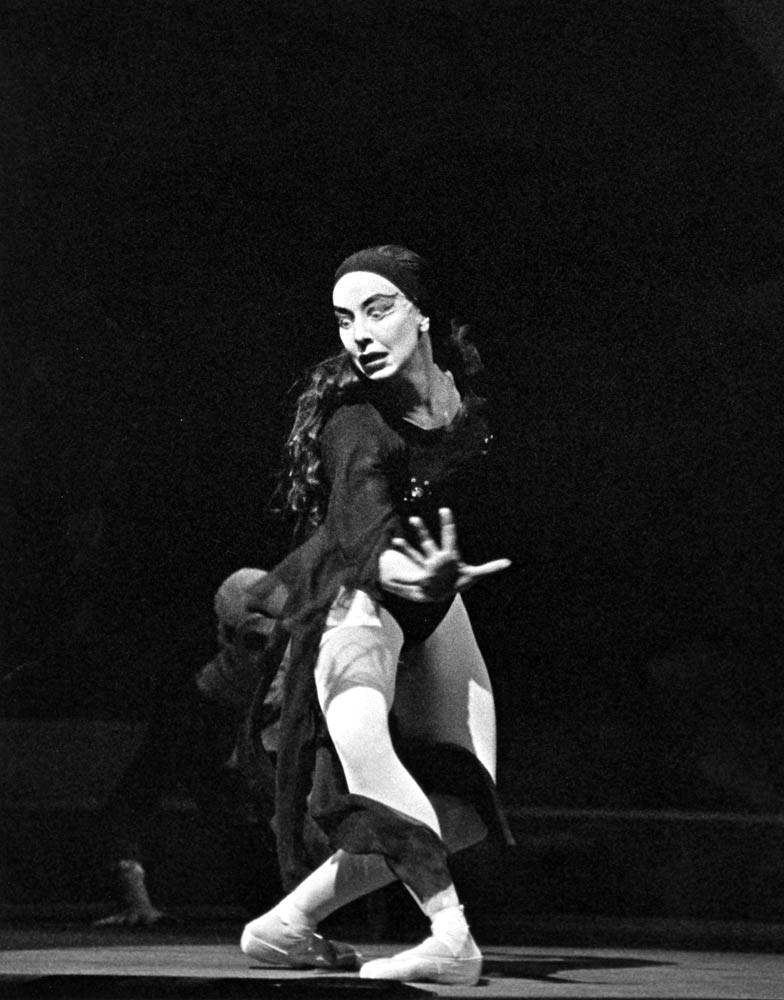
© Donald Southern, courtesy the Royal Opera House. (Click image for larger version)
In her era (mid-1940s -1960s), she was unusual among Sadler’s Wells/Royal Ballet dancers in having the buoyant elevation more often associated with Russian dancers. Watch her bound happily through the ‘Fanny Elssler’ variation in La Fille mal gardée and you might compare her right now with Natalia Osipova. Nerina’s airy jumps also feature in Ashton’s choreography for the Spring fairy in Cinderella and ‘her’ variation in Birthday Offering. When she danced Swanilda in 1954, Ashton was Dr Coppélius – there’s a photograph of them together in the corridor leading to the downstairs loos.

© Roger Wood, courtesy the Royal Opera House. (Click image for larger version)
Her Swanilda costume, with a blue velvet bodice and pink appliqué flowers, is in a glass case nearby. This one was for Dale’s BBC TV film of Coppélia in 1958, recorded in black and white (as are most of the photographs of Nerina). Her 1950s tutus for Odette and Odile are on display in the Bow Street foyer, along with a Dying Swan one with real wing feathers. Some of the costumes are from Nerina’s own collection, worn in the Ballet Highlights tours she organised with Alexis Rassine as her partner. They travelled to various parts of Africa, including her home country of South Africa, as well as around the United Kingdom. A poster for a 1956 tour bills them as ‘World famous stars of Sadler’s Wells Ballet and television’.
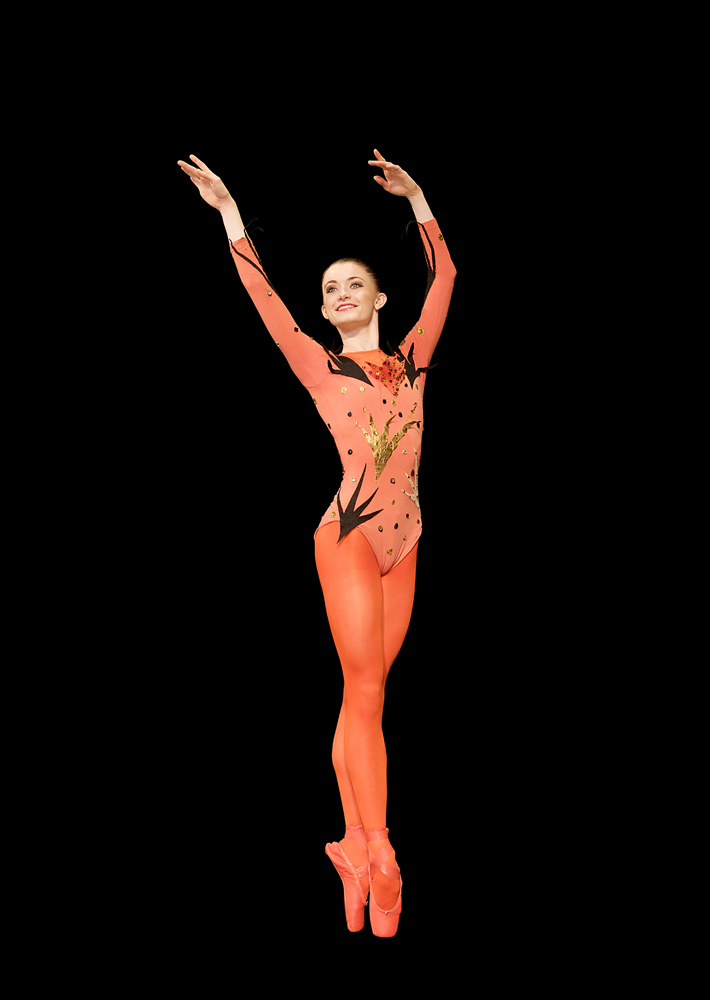
© Elliott Franks. (Click image for larger version)
She was born in Durban, changing her name from Nadine Judd when she joined the Sadler’s Wells Ballet after the war. A promising pupil in her teens, she first became a member the newly-formed junior company in 1946, at the same time as her fellow South African, John Cranko. Once Nerina was promoted to principal of the Covent Garden company in 1952, she and Svetlana Beriosova were regarded as second only to Margot Fonteyn; all three were admired for their distinctive qualities. Rehearsal footage of Sylvia, with snippets of Fonteyn and Nerina preparing the same role, reveals how different they were: bravura Nerina dances full out, while Fonteyn is restrained, lyrical.
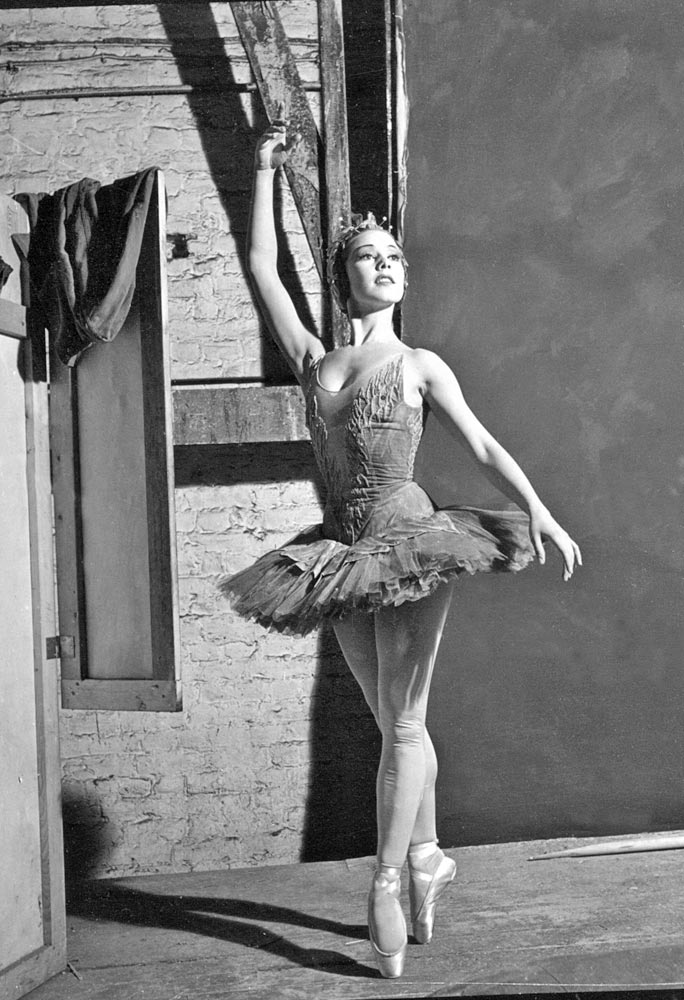
© Roger Wood, courtesy the Royal Opera House. (Click image for larger version)
In 1960, the year Ashton created La fille mal gardée, Nerina was invited to be a guest artist with the Bolshoi and Kirov companies. She had already danced Giselle with Nicolai Fadeyechev of the Bolshoi for BBC TV in 1958, proving she could be a Romantic ballerina as well as a demi-caractère one. She would later be partnered by Erik Bruhn and Rudolf Nureyev. Overshadowed by Fonteyn’s partnership with Nureyev, Nerina left the Royal Ballet in 1966, returning to guest in the one-act version of Sylvia in 1967-1968. She retired to Beaulieu-sur-mer near Monaco, with her husband, Charles Gordon, and died on 6 October 2008. The conservation of her collection of costumes, photos and films, donated to the Royal Opera House archives, has been funded by the Philip Loubser Foundation.
Isabel Rawsthorne Moving Bodies Exhibition
Isabel Lambert/Rawsthorne (1912-1992)
18 March – 17 August 2013
Royal Opera House
Exhibition details
Constant Lambert’s second wife (born Isabel Nicholas) was an artist who designed for the Sadler’s Wells Ballet companies. Her sketches and paintings of dancers in rehearsal, donated to the ROH archives in 2008, are displayed along the Amphitheatre Gallery walls. Text panels provide information about her and the dancers she studied in the Royal Ballet studios in Baron’s Court during the 1950s -1960s. Oil paintings she worked up from her charcoal sketches were previously exhibited last year in The New Art Gallery in Walsall to mark the anniversary of her birth.

Photographer unknown and courtesy Royal Opera House Collections. (Click image for larger version)
At the opening of the ROH exhibition, Isabel’s biographer, Carol Jacobi, spoke of the bohemian life her subject had led. Like Florence Kaye, Lambert’s first wife and the mother of his son Kit, Isabel Nicholas may have owed her exotic looks to a parent of Asian descent. Born in the East End, she grew up in Liverpool and started her career as an artist in London as Jacob Epstein’s studio assistant (and lover). She moved to Paris, where she mixed with avant-garde artists as a model, mistress and painter in her own right. She was painted by André Derain and Pablo Picasso, and later by Francis Bacon. She was the inspiration for Alberto Giacometti’s etiolated sculptures of walking figures.

Isabel Lambert Collection, Royal Opera House Collections.
© Warwick Llewellyn Nicholas Estate. (Click image for larger version)
She married the Daily Express journalist Sefton Delmer in 1936, divorcing him during the war when she returned to England. She worked for the British government in black propaganda and may have been a spy. Back in Paris after the war, she met (and drew) Margot Fonteyn, who was devastated when Constant Lambert chose to marry Isabel rather than herself in 1947.

Isabel Lambert Collection, Royal Opera House Collections.
© Warwick Llewellyn Nicholas Estate. (Click image for larger version)
Isabel was the designer for several Sadler’s Wells ballet and opera productions, including Ashton’s controversial Tiresias (1951), whose score was by Lambert. He died soon after its premiere, and Isabel married Alan Rawsthorne, Constant’s friend and fellow composer, three years later. Rawsthorne was on the music staff of the Royal Opera House, so Isabel continued to have privileged access to dancers at work. She wrote: ‘The studios are a place of great beauty with walls of glass. They are a place of space and light . . . a very special setting created entirely for the use of those who experiment with the body. A world apart’.
She was trying to capture dancers in movement, reflected in mirrors as though in water or refracted through mist. Some of the sketches are swift squiggles, not unlike those Valentine Gross drew of Ballets Russes dancers in action. Others are more elaborate: repeated drawings of the three Shades from La Bayadère are worked up into paintings, as is a sketch of Fonteyn as Chloe. The position of Fonteyn’s extended leg in the Chloe drawing is anatomically impossible and the skeletal figure in no way resembles Fonteyn. Yet Isabel claimed to be making portraits of dancers in her own way: ‘I try to understand as much as possible about their individual shapes and gestures. To generalise would be to falsify’.

Charcoal, white chalk on board.
Isabel Lambert Collection, Royal Opera House Collections.
© Warwick Llewellyn Nicholas Estate. (Click image for larger version)
Nonetheless, without the names of dancers written on the drawings it would be impossible to identify them. At least two of the attributions must be wrong. The woman in sketches of the pas de deux from Les Biches in the 1960s cannot be Svetlana Beriosova, who danced the role of the Hostess. The pose on the man’s shoulder is that of the Blue Girl, performed by Georgina Parkinson. The three Shades whose hands are almost linked in arabesques are named as Lorrayne, Sibley and (possibly) Merry. Yet Hazel Merry has no recollection of Isabel sketching away in the rehearsal room and didn’t rehearse or perform with the other two, in any case. Might the third Shade have been Merle Park?
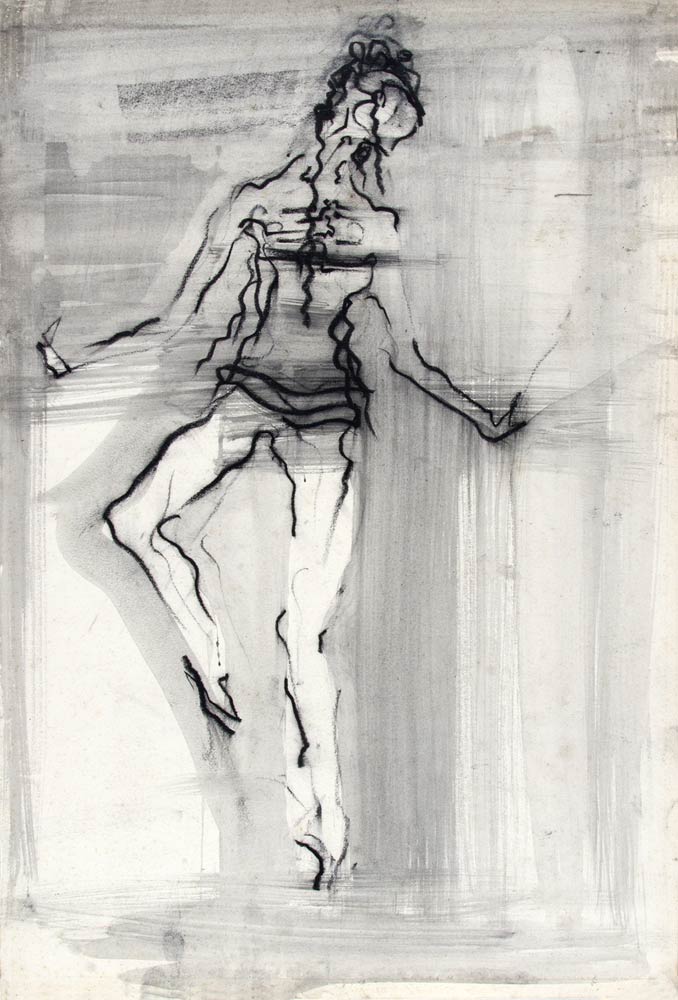
Isabel Lambert Collection, Royal Opera House Collections.
© Warwick Llewellyn Nicholas Estate. (Click image for larger version)
The attributions are unimportant if the drawings are seen not as portraits but as preparatory experiments, and the finished paintings as part of Rawsthorne’s varied artistic canon. Respected as a fine artist, her reputation was obscured by her changes of surname; she became better known for her associations with Giacometti and Francis Bacon rather than for her own work. Exhibitions since her death, including this one, have helped re-establish her status as an artist.
Dr Carol Jacobi’s book ‘Out of the Cage: the art of Isabel Rawsthorne’ is due to be published by Yale University Press at the end of this year.










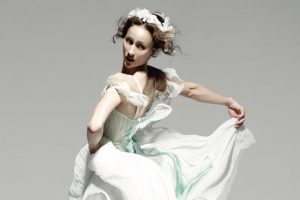




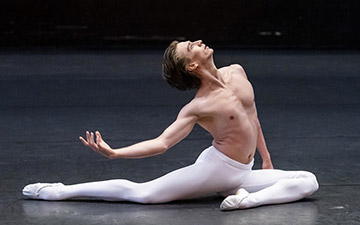
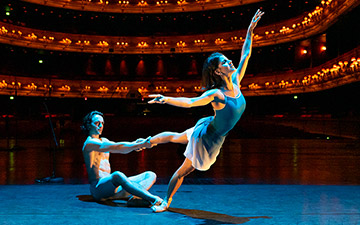
You must be logged in to post a comment.